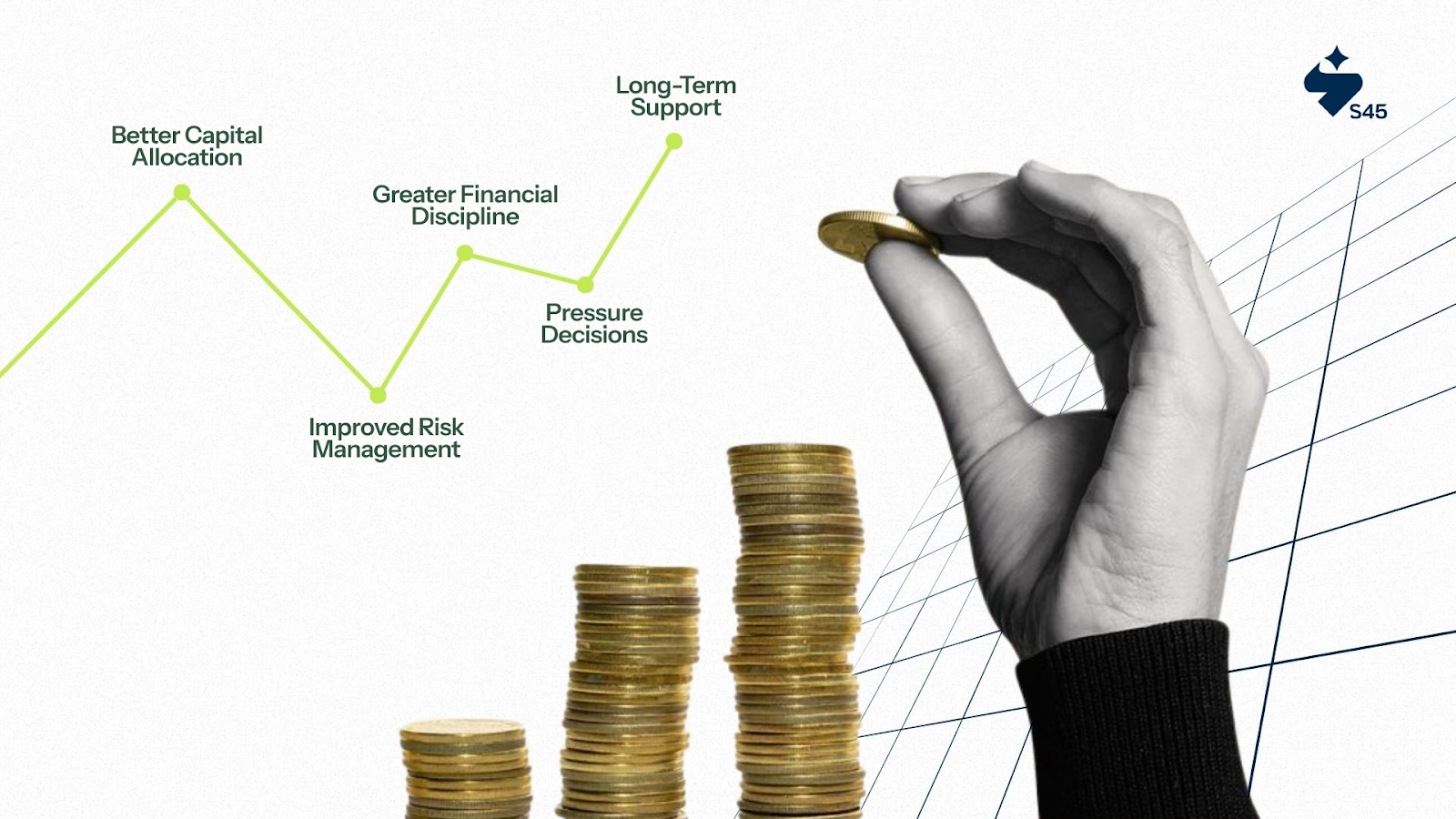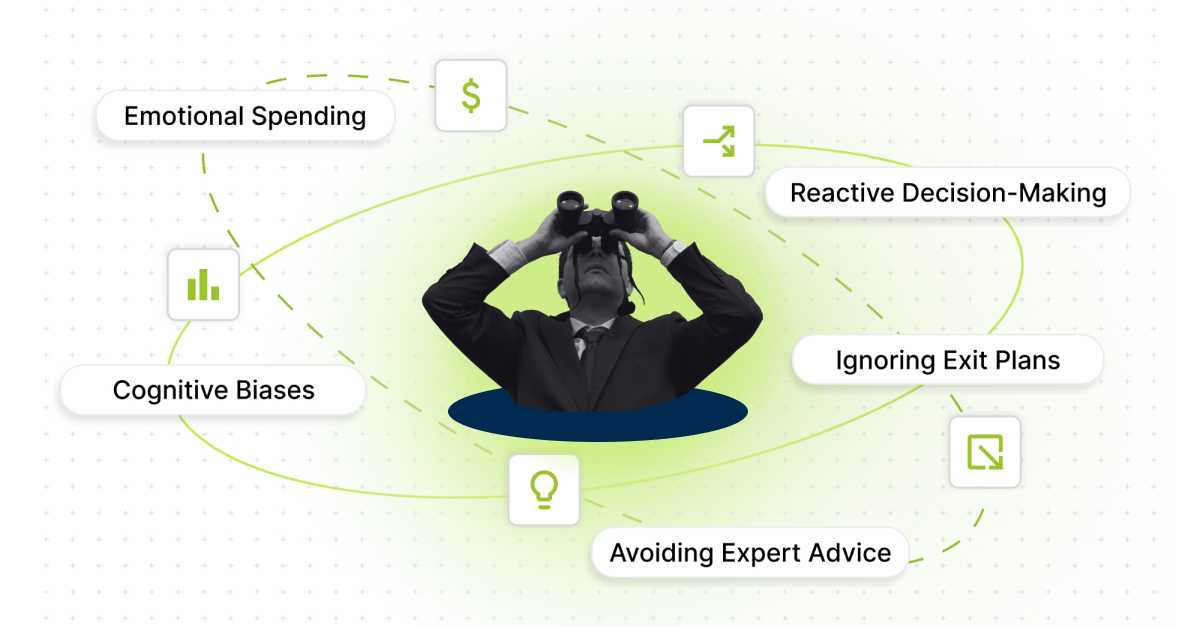
Ever made a money decision that felt perfect at the time, only to look back and think, “What was I thinking?” Every SME owner has been there. When you are juggling deadlines, clients, and cash flow, it is easy for emotions to slip into the driver’s seat.
That is where behavioral finance plays an important role. It is not about complicated formulas; it is about understanding the little mental traps we all fall into, like overconfidence, fear of losses, or following the crowd, and learning how to sidestep them.
In India, almost 90% of startups do not make it past their first five years, often because of poor planning, fierce competition, or shaky financial habits. The good news is that with a bit of awareness and the right strategies, you can avoid becoming part of that statistic.
In this guide, we will explore the top 10 behavioral finance strategies that can help you see choices more clearly, steer clear of costly mistakes, and set your SME up for long-term success.
Key Takeaways
- Behavioral finance blends psychology with money management to improve business decisions.
- Common biases like overconfidence and loss aversion can harm SME growth.
- Strategies such as goal setting, scenario planning, and diversification build stability.
- Tracking decisions helps SMEs learn and refine future actions.
- Avoid reactive choices by planning for risks and market changes.
Why Behavioral Finance Is Important for SMEs?S

Behavioral finance studies how emotions and thinking patterns influence money decisions. For SMEs, it matters because owners often act on gut feeling, even with clear numbers in front of them. Human bias can cloud judgment, leading to overconfidence during growth or panic-driven cuts during slow periods. These decisions can shape the company’s future.
Here’s why it plays a major role in SME success:
- Better capital allocation: Understanding behavioral finance helps SMEs avoid impulsive spending and channel funds where they create real value. For example, instead of overspending on a new product line due to optimism, owners can weigh facts and timing, reducing the risk of wasted investment.
- Improved risk management: Biases often make businesses underestimate or overestimate risks. A behavioral approach encourages balanced thinking, neither avoiding all risks nor taking reckless chances. This mindset is useful when entering new markets or adjusting product pricing.
- Greater financial discipline: Behavioral insights can help owners resist the temptation to spend during high-revenue months. By separating emotions from budgeting, SMEs maintain cash reserves, ensuring stability during seasonal slowdowns or economic dips.
- Stronger decision-making under pressure: When facing sudden challenges like supply chain disruptions, emotions can lead to snap decisions. Behavioral finance encourages pausing, assessing data, and considering multiple outcomes before acting, helping businesses recover faster.
- Support for long-term sustainability: Short-term gains often tempt owners, but behavioral awareness keeps focus on sustainable growth. This approach ensures decisions made today do not harm future profitability or market position.
Behavioral finance is not about removing emotions from business; it’s about recognizing them and making decisions that serve both the present and the future of the company. This understanding is the first step toward building strategies that work in all market conditions.
Top 10 Behavioral Finance Strategies for SMEs
Running a business often means making fast decisions under pressure, but rushing can lead to costly mistakes. Behavioral finance strategies help SMEs bring structure and clarity to decision-making, reducing the role of unchecked emotions. The focus is on managing money and improving how those money decisions are made.
Here are 10 practical strategies SMEs can apply:
1. Set clear financial Goals
Without defined targets, spending often becomes reactive. SMEs should set measurable, time-bound goals, such as increasing profit margins by 5% in a year or cutting operational costs by 10%. Break these into smaller milestones for easy tracking.
Share goals with your finance team so decisions align with them. It creates accountability and helps filter out spending that does not serve the plan.
2. Use Pre-Commitment Notions
Pre-commitment removes temptation from daily decision-making. Automating savings, debt repayments, and recurring investments ensures funds are allocated before they can be spent impulsively.
SMEs can set up standing instructions for payments or fixed transfers to reserve accounts. Over time, it builds financial discipline without relying on willpower alone.
3. Diversify Investments and Revenue Streams
Depending heavily on one client, product, or market increases risk. SMEs must figure out multiple income sources, such as new product lines, export markets, or service add-ons.
Similarly, investing in a mix of assets, like fixed deposits and business expansion, reduces vulnerability. This diversification helps sustain cash flow even if one area slows down.
4. Apply the 80/20 Rule for Costs
Often, 20% of expenses generate 80% of results. SMEs should identify the cost areas with the highest returns, like marketing channels that bring the most sales, and prioritize them.
Review low-impact expenses regularly and redirect funds to activities that move the business forward. This keeps spending efficient and purposeful.
5. Avoid Overconfidence Bias
Confidence is useful, but unchecked optimism can harm financial health. Before expanding or launching a new product, SMEs should validate the idea with customer research, financial modelling, and pilot runs. It ensures decisions are backed by facts, not just beliefs.
Encouraging open discussion within the team can also expose potential blind spots.
6. Plan for Loss Aversion
Owners often fear losses more than they value gains, which can lead to missed opportunities or panic selling. SMEs should create a clear risk policy, including emergency funds, insurance, and diversification buffers.
Having these in place allows for calmer responses during downturns without sacrificing long-term opportunities.
7. Adopt Scenario Planning
Markets are unpredictable. Before making major moves, SMEs should model best, moderate, and worst-case outcomes. It can include sales projections, cost changes, and competitor actions.
Planning across scenarios prepares the business to turn quickly, reduces surprises, and keeps decisions aligned with risk capacity.
8. Track Decisions, Not Just Results
Results can be influenced by external factors, but tracking the reasoning behind each decision provides long-term learning. SMEs can maintain a “decision log” detailing the context, data used, and expected outcomes.
Reviewing this regularly helps refine future decisions and reduces repeated mistakes.
9. Use Independent Advisors for Big Moves
Emotions can cloud judgment, especially when the stakes are high. External advisors such as financial, legal, or industry experts can offer a balanced view.
At S45, we connect SMEs with experienced mentors and specialists who provide more than just agreement. They challenge assumptions, stress-test your plans, and bring fresh perspectives. This extra layer of insight can be the difference between a costly misstep and a well-timed, strategic move.
10. Regularly Revisit Assumptions
Markets, customer behavior, and costs can shift quickly. SMEs should schedule quarterly reviews to test whether key assumptions about demand, pricing, or competition still hold.
Updating strategies based on fresh data ensures the business stays relevant and competitive.
Applying these strategies consistently helps SMEs avoid bias-driven pitfalls, make better choices, and stay financially stable even during uncertain times. In the same way, being aware of common mistakes can protect businesses from undoing these efforts.
Common Mistakes to Avoid in SME Behavioral Finance
Even with a solid understanding of behavioral finance, SMEs can still slip into patterns that weaken decision-making. These mistakes are often subtle at first but can grow into major financial setbacks. Recognizing them early makes it easier to prevent long-term damage.

Here are some pitfalls every SME should watch for:
- Emotional spending during growth: A strong sales month can tempt owners to increase spending on non-essential upgrades, events, or expansions. Without building reserves, it leaves the business vulnerable when sales dip.
The solution is to allocate a fixed percentage of extra income to savings before making discretionary spending. It ensures growth periods strengthen the business instead of creating financial strain later.
- Ignoring cognitive biases: Overconfidence can lead to overestimating market demand, herd mentality can push a business to follow industry trends unthinkingly, and the sunk cost fallacy can keep failing projects alive.
The fix is to challenge assumptions with complex data, encourage team debate, and be willing to turn even if resources have already been invested. Bias awareness should be part of regular decision reviews.
- Reactive, not proactive, decision-making: Waiting for a crisis before making changes often results in rushed, costly fixes. It is common in areas like cash flow management or inventory control.
SMEs should adopt regular forecasting and early-warning indicators, such as monitoring late payments or tracking market signals, to act before problems escalate. Proactive steps save both time and money.
- Neglecting exit strategies: Many SMEs focus solely on growth, ignoring scenarios where a product, service, or even the business model needs to be phased out. Without an exit plan, owners can become emotionally tied to underperforming ventures.
A clear exit strategy, with predefined performance triggers, allows for timely shifts to better opportunities.
- Not seeking expert input: Some owners believe handling all financial decisions themselves is cheaper. However, missed tax benefits, poor structuring, or market misreads can cost far more.
Engaging external advisors, even on a periodic basis, brings fresh insight and helps spot risks that internal teams might overlook.
Avoiding these common traps protects a business’s financial health and creates space for smarter, more confident decision-making. This is where specialized platforms can step in to strengthen SME strategies and reduce risk.
How Does S45 Help SMEs Apply Behavioral Finance Principles?
S45 is a specialized platform designed for high-performing Indian SMEs to make sharper, evidence-based business decisions. It works with companies earning ₹100 crore or more in revenue or generating ₹10 crore or more in annual profit.
- For SMEs aiming to apply behavioral finance in daily operations, S45 offers targeted support. You gain access to sector-specific financial advisors who understand the nuances of your industry.
- Even our decision-support tools help structure capital efficiently, plan growth, and reduce the influence of emotional bias.
- The platform’s deep proficiency in manufacturing and trading means strategies are not generic, but tuned to your business realities.
- Through Club S45, founders can connect with peers, compare decisions, and benchmark strategies, ensuring choices are backed by real-world data, not assumptions.
- The S45 community creates a space to share insights, learn from other leaders, and refine financial thinking.
Want to plan your next financial decision with confidence? Join S45 today.
Conclusion
Behavioral finance blends psychology with money decisions, helping SMEs avoid costly emotional mistakes. By understanding biases like overconfidence or loss aversion, owners can make better choices during both growth and downturns.
Strategies such as setting clear financial goals, using pre-commitment devices, diversifying income, and applying the 80/20 rule help improve capital allocation, risk management, and long-term stability.
Avoiding common mistakes, like emotional spending, ignoring cognitive biases, reactive decision-making, and skipping expert advice, keeps growth sustainable. SMEs that apply these principles can benefit from steadier cash flow, smarter investments, and scalable growth.
Whether you're planning an expansion or managing daily operations, disciplined decision-making backed by data and expert insight pays off. What will be your first step toward smarter financial decisions? Connect with S45 today to start applying these strategies and watch your business grow with clarity and confidence.
Frequently Asked Questions
1. What is behavioral finance in simple terms?
Behavioral finance studies how emotions and biases affect financial decisions. For SMEs, it means recognizing that choices are not always based on data. By understanding these patterns, owners can avoid impulsive actions and make decisions that support sustainable business growth.
2. How can SMEs use the 80/20 rule for better finances?
The 80/20 rule focuses on identifying the 20% of costs or activities that generate 80% of results. SMEs can analyze expenses and redirect resources to the most profitable areas. This approach improves returns without increasing workload or overspending.
3. Why do SMEs need pre-commitment notions?
Pre-commitment notions lock in planned actions before emotions interfere. Examples include automating savings, debt repayments, or investments. For SMEs, this prevents impulsive spending during good months and ensures funds are always available for planned priorities or emergencies.
4. What are the most common biases SME owners face?
Owners often face overconfidence, loss aversion, and herd mentality. These biases can lead to overexpansion, panic cuts, or risky copying of competitors. Awareness, decision logs, and external advice can help reduce their impact and improve decision quality.
5. How can SMEs avoid emotional spending during growth phases?
Owners should set clear financial goals, maintain cash reserves, and follow a spending plan. Using pre-commitment devices like automated transfers ensures funds are allocated before temptation strikes. Regular financial reviews help maintain discipline and prevent waste during high-revenue periods.


